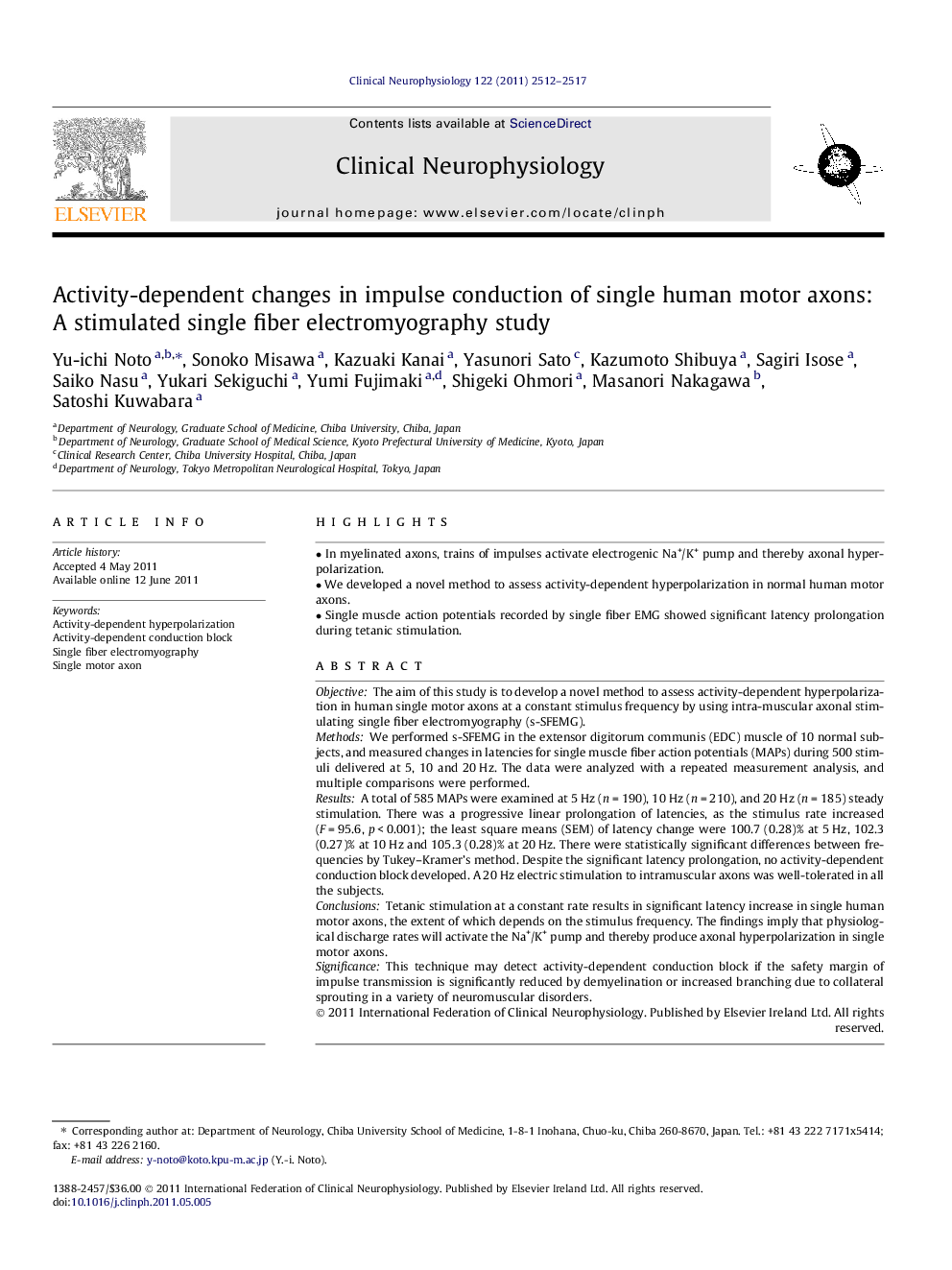| Article ID | Journal | Published Year | Pages | File Type |
|---|---|---|---|---|
| 3043990 | Clinical Neurophysiology | 2011 | 6 Pages |
ObjectiveThe aim of this study is to develop a novel method to assess activity-dependent hyperpolarization in human single motor axons at a constant stimulus frequency by using intra-muscular axonal stimulating single fiber electromyography (s-SFEMG).MethodsWe performed s-SFEMG in the extensor digitorum communis (EDC) muscle of 10 normal subjects, and measured changes in latencies for single muscle fiber action potentials (MAPs) during 500 stimuli delivered at 5, 10 and 20 Hz. The data were analyzed with a repeated measurement analysis, and multiple comparisons were performed.ResultsA total of 585 MAPs were examined at 5 Hz (n = 190), 10 Hz (n = 210), and 20 Hz (n = 185) steady stimulation. There was a progressive linear prolongation of latencies, as the stimulus rate increased (F = 95.6, p < 0.001); the least square means (SEM) of latency change were 100.7 (0.28)% at 5 Hz, 102.3 (0.27)% at 10 Hz and 105.3 (0.28)% at 20 Hz. There were statistically significant differences between frequencies by Tukey–Kramer’s method. Despite the significant latency prolongation, no activity-dependent conduction block developed. A 20 Hz electric stimulation to intramuscular axons was well-tolerated in all the subjects.ConclusionsTetanic stimulation at a constant rate results in significant latency increase in single human motor axons, the extent of which depends on the stimulus frequency. The findings imply that physiological discharge rates will activate the Na+/K+ pump and thereby produce axonal hyperpolarization in single motor axons.SignificanceThis technique may detect activity-dependent conduction block if the safety margin of impulse transmission is significantly reduced by demyelination or increased branching due to collateral sprouting in a variety of neuromuscular disorders.
► In myelinated axons, trains of impulses activate electrogenic Na+/K+ pump and thereby axonal hyperpolarization. ► We developed a novel method to assess activity-dependent hyperpolarization in normal human motor axons. ► Single muscle action potentials recorded by single fiber EMG showed significant latency prolongation during tetanic stimulation.
